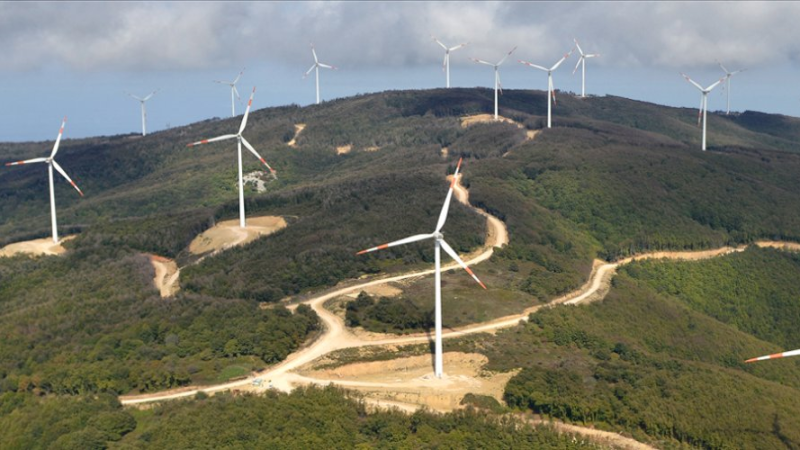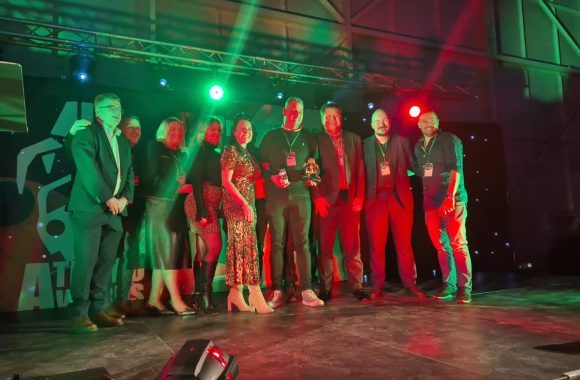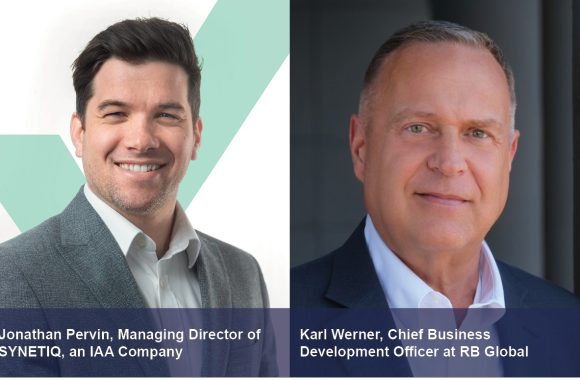- Company invests in carbon projects in the UK, Turkey and India to complement its robust decarbonisation plans.
- The projects, including a UK-based woodland restoration project making up 50% of the total carbon credits purchased and 2 renewable energy projects in Turkey and India (making up 30% and 20% of the business’ total purchased carbon credits, respectively), have been carefully selected to achieve a number of aims contributing to clean and green development in other parts of the world.
As outlined in its sustainability report, SYNETIQ, an IAA company, continues to make progress in reducing its environmental impact, following business-wide initiatives to reduce CO2 emissions and decarbonise its operations.
Working in collaboration with Highland Carbon, specialists in carbon market solutions for climate action, SYNETIQ is financing projects both in the UK and internationally which are avoiding CO2 emissions to the atmosphere now, or helping to store carbon in new forests, while supporting the transition to a low-carbon global economy.
SYNETIQ uses the projects to complement — not substitute for — its long-term decarbonisation plans, which include switching to renewable energy, electrifying transport and cutting energy use across its estate.
“We’re pleased to announce the issuance of carbon credits from programmes in the UK and internationally as we explore all possible measures to reduce and avoid our emissions and impact on the planet,” said Tom Rumboll, UK Managing Director for IAA and CEO of SYNETIQ. “These projects complement our carbon reduction strategies around transitioning to low-carbon transport and estate, investing in renewable energy and improving our circularity and waste management.”
Carbon offsetting can be controversial, with businesses under increasing scrutiny for relying on offsetting as a means to substitute other climate change mitigation measures. “SYNETIQ are committed to the meaningful decarbonisation of our business and will not be using these carbon credits to simply ‘offset’ our emissions, but rather to diversify our comprehensive decarbonisation plans,” clarifies Elisa Caton, SYNETIQ’s Sustainability Manager.
“High-quality carbon projects like these provide the financing necessary to ensure governments and local communities keep their forests standing and develop sustainable fuel alternatives to fossil fuel use. We recognise that we have a responsibility not only to reduce our impact on the planet now but also for our historic emissions, and we hope that this investment goes someway to demonstrating our holistic commitment to our shared environment,” Caton continued.
In the UK, SYNETIQ’s afforestation project on Corriegarth Estate near Loch Ness, Scotland, entails the establishment of a diverse, native forest. Expanding on the existing woodland on the estate with forest planting comprising a diverse range of tree species, the project also supports biodiversity in the area, being home to red squirrels, pine martens, golden eagles, goldcrest and more. Verified by the Woodland Carbon Code scheme, the project represents 25% of the business’ Scope 1 and 2 emissions from 2021.
Representing 15% of SYNETIQ’s Scope 1 and 2 emissions from 2021, the Sah wind power project is based in the Bandirma district of Balikesir and the Karacabey district of Bursa in Turkey and is verified by the independent and internationally recognised Gold Standard verification scheme.
SYNETIQ’s second international carbon project is the Sheopur solar power project, located in Madhya Pradesh, India. The project is a cleaner means for power generation, avoiding fossil fuel-based thermal power generation, positively contributing towards the reduction in demand for India’s carbon-intensive energy resources. It represents 10% of the business’ Scope 1 and 2 emissions from 2021 and is verified by the UN Clean Development Mechanism scheme.
Learn more about sustainability at SYNETIQ: https://www.synetiq.co.uk/sustainability/
About SYNETIQ
SYNETIQ Ltd., the UK-based business unit of IAA Holdings, LLC (IAA), an RB Global, Inc. company, is the leading integrated salvage, dismantling and vehicle recycling company in the UK, formed to become the most innovative and trusted business in the industry. An integrated, data-driven and innovative business, SYNETIQ has led the way in raising industry standards and continually innovates ways of working to deliver great value, ensure complete compliance and a provide a positive experience. SYNETIQ is proud to have major household names in its portfolio, including insurers, accident management companies, fleets, police forces, logistics companies, vehicle repair body shops, and remanufacturers. With cutting-edge data and software solutions, multiple sites, a specialist vehicle recovery fleet and over 800 dedicated UK-based employees, customers and clients trust SYNETIQ to create bespoke solutions to deliver the maximum benefit for their business. For more information about SYNETIQ visit SYNETIQ.co.uk.
Forward-Looking Statements
IAA Holdings, LLC (as successor to IAA, Inc.) (“IAA”), a leading global digital marketplace connecting vehicle buyers and sellers, is now a subsidiary of Ritchie Bros. Auctioneers Incorporated. This release includes forward-looking information within the meaning of Canadian securities legislation and forward-looking statements within the meaning of Section 27A of the Securities Act of 1933, as amended, Section 21E of the Securities Exchange Act of 1934, as amended, and the Private Securities Litigation Reform Act of 1995 (collectively, “forward-looking statements”). Forward-looking statements may include statements relating to future events and anticipated results of operations, business strategies, the expected timing and associated benefits with respect to SYNETIQ’s investment in carbon projects in the UK, Turkey and India, as well as its overall decarbonisation plans and efforts, the predicted benefits of the same, and other subjects of this release on our business and plans regarding our growth strategies, and to our customers and company generally, and other aspects of RBA’s or IAA’s respective businesses, operations, financial condition or operating results and other statements that are not historical facts. Words such as “should,” “may,” “will,” “anticipates,” “expects,” “intends,” “plans,” “believes,” “seeks,” “estimates” “could,” “can,” “intends,” “target,” “goal,” “projects,” “contemplates,” “believes,” “predicts,” “potential,” “continue,” “foresees,” “forecasts,” “estimates,” “opportunity” and similar expressions identify forward- looking statements. It is uncertain whether any of the events anticipated by the forward-looking statements will transpire or occur, or if any of them do, what impact they will have on the results of operations and financial condition of the combined companies or the price of RBA’s common shares. Therefore, you should not place undue reliance on any such statements and caution must be exercised in relying on forward-looking statements. While RBA’s management believe the assumptions underlying the forward-looking statements are reasonable, these forward-looking statements involve certain risks and uncertainties, many of which are beyond RBA’s control, that could cause actual results to differ materially from those indicated in such forward-looking statements, including but not limited to: the effects of the business combination of RBA and IAA, including the combined company’s future financial condition, results of operations, strategy and plans; potential adverse reactions or changes to business or employee relationships, including those resulting from the completion of the merger; the diversion of management time on transaction-related issues; the response of competitors to the merger; the ultimate difficulty, timing, cost and results of integrating the operations of RBA and IAA; the fact that operating costs and business disruption may be greater than expected following the consummation of the merger; the effect of the consummation of the merger on the trading price of RBA’s common shares; the ability of RBA to retain and hire key personnel and employees; the significant costs associated with the merger; the outcome of any legal proceedings that could be instituted against RBA; the ability of the combined company to realize anticipated synergies in the amount, manner or timeframe expected or at all; the failure of the combined company to realize potential revenue, EBITDA, growth, operational enhancement, expansion or other value creation opportunities from the sources or in the amount, manner or timeframe expected or at all; the failure of the trading multiple of the combined company to normalize or re-rate and other fluctuations in such trading multiple; changes in capital markets and the ability of the combined company to generate cash flow and/or finance operations in the manner expected or to de-lever in the timeframe expected; the failure of RBA or the combined company to meet financial forecasts and/or KPI targets; legislative, regulatory and economic developments affecting the business of RBA; general economic and market developments and conditions; the evolving legal, regulatory and tax regimes under which RBA operates; unpredictability and severity of catastrophic events, including, but not limited to, pandemics, acts of terrorism or outbreak of war or hostilities, as well as RBA’s response to any of the aforementioned factors. Other risks that could cause actual results to differ materially from those described in the forward-looking statements are included in RBA’s periodic reports and other filings with the Securities and Exchange Commission (“SEC”) and/or applicable Canadian securities regulatory authorities, including the risk factors identified under Item 1A “Risk Factors” and the section titled “Summary of Risk Factors” in RBA’s most recent Annual Report on Form 10-K for the fiscal year ended December 31, 2022, and IAA’s periodic reports and other filings with the SEC, including the risk factors identified under Item 1A “Risk Factors” and the section titled “Summary of Risks Affecting our Business” in IAA’s most recent Annual Report on Form 10-K for the fiscal year ended January 1, 2023. The forward-looking statements included in this release are made only as of the date hereof. While the list of factors presented here is considered representative, no such list should be considered to be a complete statement of all potential risks and uncertainties. Many of these risk factors are outside of our control, and as such, they involve risks which are not currently known that could cause actual results to differ materially from those discussed or implied herein. RBA does not undertake any obligation to update any forward-looking statements to reflect actual results, new information, future events, changes in its expectations or other circumstances that exist after the date as of which the forward-looking statements were made, except as required by law.





